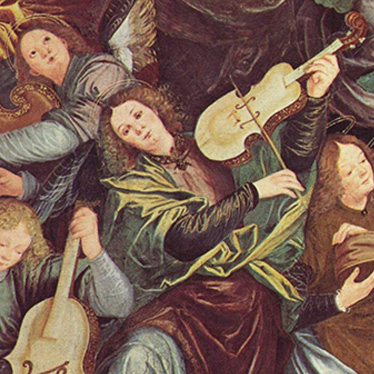History of the Violin: Facts You May Not Know

The violin is the undisputed leader of the orchestra. Anyone passingly familiar with music knows of the violin. But how much do you know about its origins and evolution?
Ancient Origins of the Violin
The oldest known ancestor to the violin is the ravanastron, dating back to 5000 BCE and found on the island of Sri Lanka. The ravanastron had one 22-inch string that spanned three octaves, which is similar to the combined tonal range and string length of all four strings on a contemporary violin.
However, stringed instruments appear throughout the ancient world, from the Chinese erhu to the Greek kithara. The rebec from the 10th century Middle East is the first believed to be held under the chin while played. The rebec had three strings. Some sources say the rebec made its way to Western Europe via the Muslim conquest of Spain. Others say the rebec was developed in Spain during the Muslim Conquest as an evolution of the Arabic rabab. The rabab was a two-string instrument played upright.
One of the earliest evolutions of the rebec was the French vielle. The vielle had three to five strings. It was popular with Medieval troubadours.
Development of the Modern Violin
The modern violin was developed in Europe, with its origins firmly in Italy. Paintings depict a three-string violin as early as 1520. A mural in the Saronno Cathedral, dated to around 1535, is the most prominent representation of the violin. The Saronno Cathedral, as it happens, is located in the Lombardy region of Italy, which is also home to the cities of Brescia and Cremona. The Lombardy region is full of wood that was particularly well-suited for instrument-making, and was the first center of master luthiers. Cremona gets top billing now, due to the work of Amati, Stradivari, and Guarneri. However, the luthiers of nearby Brescia were the first to craft high-quality violins.
The general design of the violin was standardized in the 16th century. It's believed the standardization occurred because Andrea Amati had to "mass produce" a large number of string instruments to fill an order places placed by Catherine de Medici in 1560. It's believed the scale of the commission resulted in the fixing of the fourth string and popularizing the f-curve as part of the violin's design.
The shape and dimensions of the f-curve weren't standardized until the 19th century. The urban legend is that the placement of the notches was set as a pointer to where the bridge should be installed. Thus, the remaining s-curves gave way to the f-curve. Other construction forms that were standardized in the 19th century include the bridge height, lengthening of the neck and fingerboard, and setting the neck at a slight backward angle.
The Italians weren't the only ones to make their mark on the modern violin. The dimensions of the modern bow were standardized in 1786 by Frenchman François Tourte. The changes to its tension and balance allowed for more intensive bowing techniques like the martelé. German Louis Spohr introduced the chin rest first around 1820. The electronic violin made its first appearance in 1938, developed by Marshall Moss of the National Symphony Orchestra and William Bartley, an engineer.
Ceren Aksan performs on electric violin at the 16th Frankfurt Turkish Film Festival (2017)
Violin's rise to prominence
The lira da braccio, the Italian incarnation of the vielle, was also an instrument for street poets. It had seven strings. The vielle and lira da braccio are considered ancestors to the fiddle. The lira da braccio's status started to rise in the 15th and 16th centuries when it made its way to court musicians.
Monteverdi raised the status of the early violin, a member of the viola da braccio family, further in the early 17th century by using them extensively in his symphonic compositions. King Louis XIII of France also contributed to the early violin's central place in classical music. He established Les 24 Violons du Roi as his royal court orchestra in 1626.
Baroque Music Center of Versailles recreates Les 24 Violons du Roi
The quirky and sundry
With such a long history, the violin has some good stories to tell. Here's some interesting facts about the violin that enrich its reputation.
- Keeping the terms straight. The viola da braccio (also viole da braccio) is the name for the first formal family of string instruments held in the arms while played. The viola da gamba family of stringed instruments were those held between the knees when played.
- The word "violin" derives from the Medieval Latin world vitula, which means "string instrument." Vitula is believed to come from vitulari, which means "to be joyful" or "to make merry." Vitula was the Roman goddess of joy. An alternate etymology notes the vitula means "a calf." This theory suggests that vitula expanded to mean "string instrument" since the strings at the time were made from calf gut.
- There's no definitive conclusion as to the world's oldest violin. The main competitors were both crafted by Amati. His "Charles IX" violin may date to 1564. Decorations on Amati's "Kurz" violin indicate it may have been part of a royal wedding gift in 1559. The "Kurz" is on display at New York's Metropolitan Museum of Art.
- A 1731 Stradivarius spent 25 years hidden away in the closet of a reclusive American heiress. The violin wasn't discovered until after her death.
- The British trading company, East India Company, may have brought the violin to India in the late 18th century. Baluswami Dikshitar (1786 - 1859) is believed to be the first Indian violinist. He incorporated the instrument into the Carnatic music of southern India.
What's your history with the violin? How did it first make an appearance in your life? Share your stories about the violin in the comments below.
Top image: Musizierende Engel by Gaudenzio Ferrari, from the Santa Maria dei Miracoli. Photograph by the Yorck Project, courtesy of Wikicommons.
Sponsored by Thomastik-Infeld


